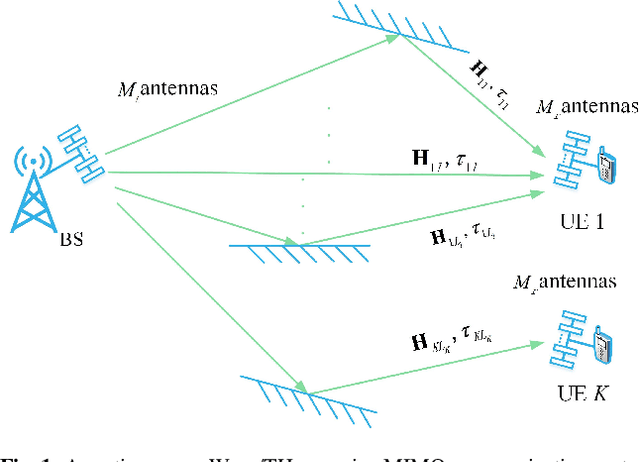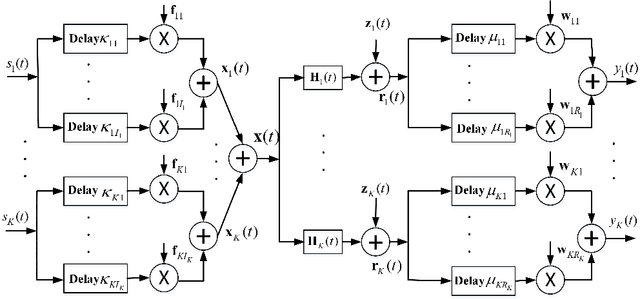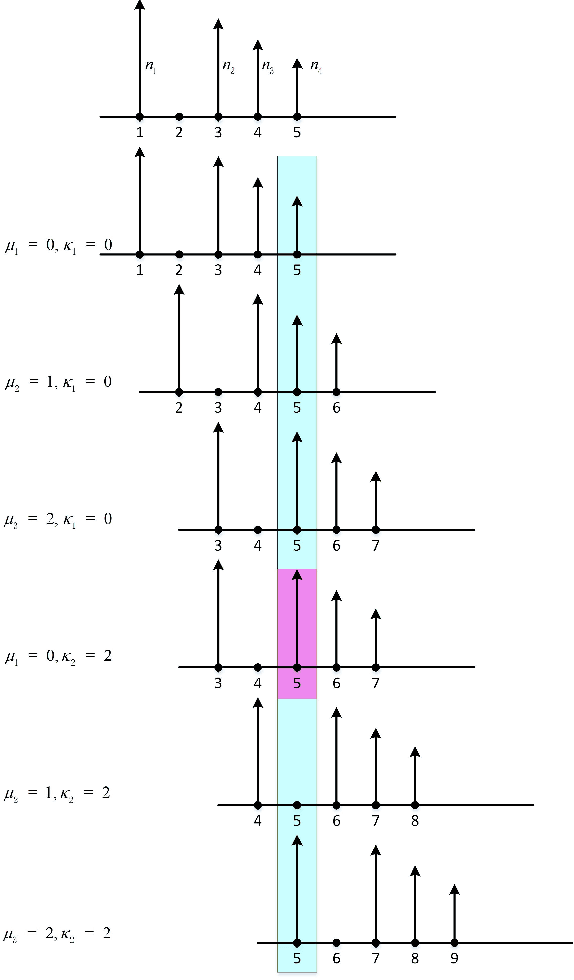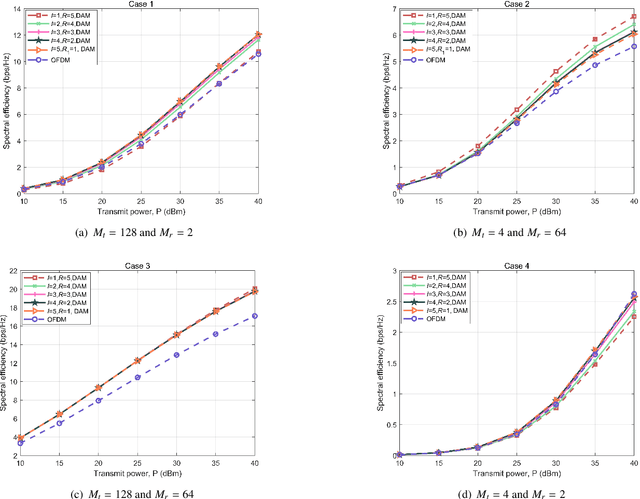Jieni Zhang
Double-Side Delay Alignment Modulation for Multi-User Millimeter Wave and TeraHertz Communications
Oct 22, 2024



Abstract:Delay alignment modulation (DAM) is an innovative broadband modulation technique well suited for millimeter wave (mmWave) and terahertz (THz) massive multiple-input multiple-output (MIMO) communication systems. Leveraging the high spatial resolution and sparsity of multi-path channels, DAM mitigates inter-symbol interference (ISI) effectively, by aligning all multi-path components through a combination of delay pre/post-compensation and path-based beamforming. As such, ISI is eliminated while preserving multi-path power gains. In this paper, we explore multi-user double-side DAM with both delay pre-compensation at the transmitter and post-compensation at the receiver, contrasting with prior one-side DAM that primarily focuses on delay pre-compensation only. Firstly, we reveal the constraint for the introduced delays and the delay pre/post-compensation vectors tailored for multi-user double-side DAM, given a specific number of delay pre/post-compensations. Furthermore, we show that as long as the number of base station (BS)/user equipment (UE) antennas is sufficiently large, single-side DAM, where delay compensation is only performed at the BS/UE, is preferred than double-side DAM since the former results in less ISI to be spatially eliminated. Next, we propose two low-complexity path-based beamforming strategies based on the eigen-beamforming transmission and ISI-zero forcing (ZF) principles, respectively, based on which the achievable sum rates are studied. Simulation results verify that with sufficiently large BS/UE antennas, single-side DAM is sufficient. Furthermore, compared to the benchmark scheme of orthogonal frequency division multiplexing (OFDM), multi-user BS-side DAM achieves higher spectral efficiency and/or lower peak-to-average power ratio (PAPR).
Delay Alignment Modulation with Hybrid beamforming for Spatially Sparse Communications
Jul 17, 2023Abstract:For millimeter wave (mmWave) or Terahertz (THz) communications, by leveraging the high spatial resolution offered by large antenna arrays and the multi-path sparsity of mmWave/THz channels, a novel inter-symbol interference (ISI) mitigation technique called delay alignment modulation (DAM) has been recently proposed. The key ideas of DAM are delay pre-compensation and path-based beamforming. However, existing research on DAM is based on fully digital beamforming, where the number of radio frequency (RF) chains required is equal to the number of antennas. This leads to high hardware cost and power consumption for mmWave/THz massive multiple-input multiple-output (MIMO) communications. Thus, this paper proposes the hybrid analog/digital beamforming based DAM. The analog and digital beamforming matrices are designed to achieve performance close to DAM based on fully digital beamforming. The effectiveness of the proposed technique is verified by simulation results.
 Add to Chrome
Add to Chrome Add to Firefox
Add to Firefox Add to Edge
Add to Edge